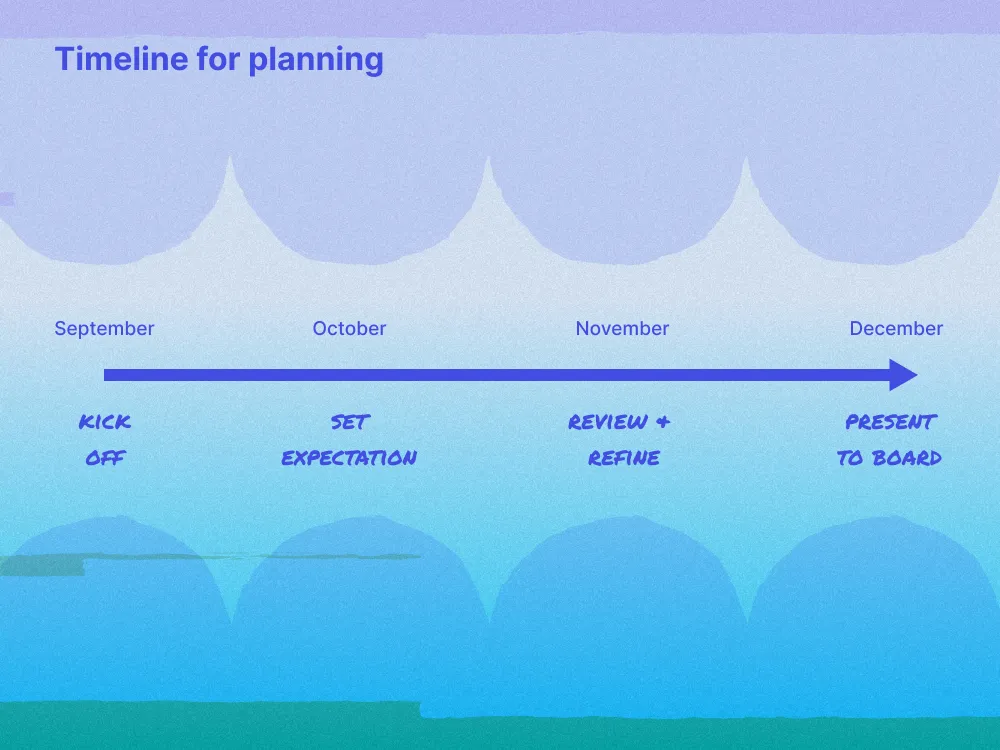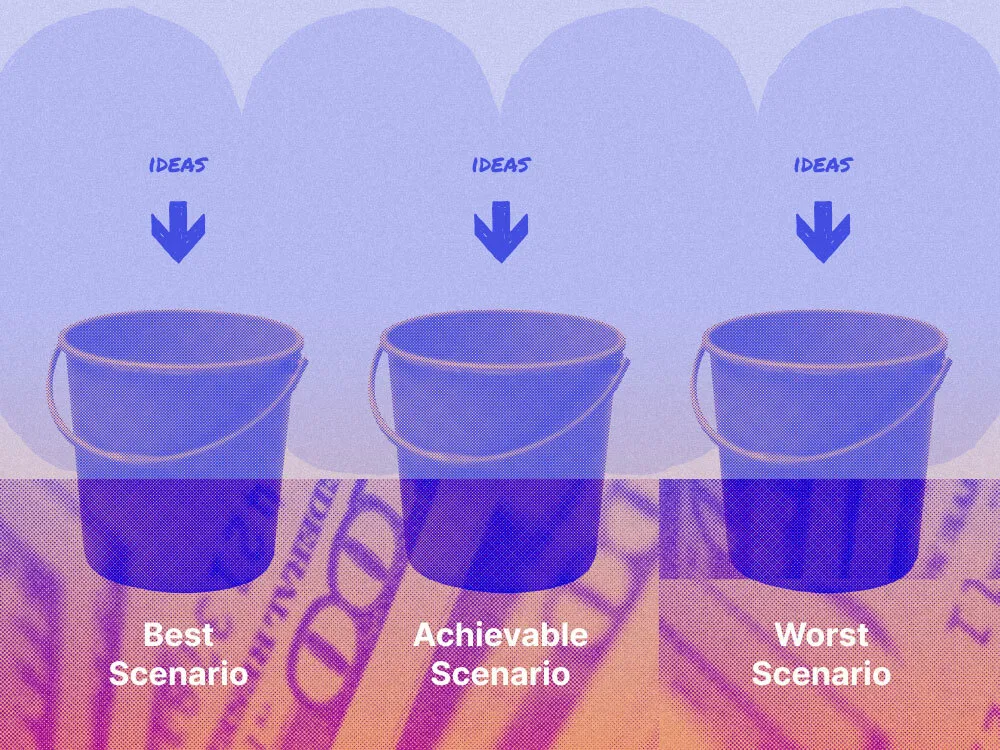For years, B2B SaaS was the most stable business model of them all, reeling in a steady stream of predictable revenue month after month.
Yet if the past few years have taught us anything, it’s that SaaS revenue isn’t as one-dimensional as we once thought. It’s dependent on a highly dynamic market that can topple even the best-laid financial projections and business plans.
So, what’s the point of even making them?
There’s a simple answer: Without a revenue plan, you have no baseline or map, making it near-impossible to measure your progress — let alone hit the KPIs your leadership team, stakeholders, and Board are counting on you to hit.
But with so many variables at play, building a realistic revenue plan is easier said than done.
We consulted PartnerStack’s CMO, Tyler Calder, to break down the revenue planning process for us. Read on to find out how to hit your revenue goals no matter what the market throws your way.
How to build a solid revenue plan for 2025
When you see leadership teams downloading financial statements and working on complex spreadsheets filled with incoming revenue, it’s easy to feel like revenue planning needs to be an exact science.
But as Calder puts it, “It’s not about getting everything right. It’s about developing a plan that points the team in the right direction.”
Here are six concrete steps to guide revenue teams to success in their financial projections and operational efficiency for the coming year.
Kick off planning early
It’s customary for VC-backed companies to present their plan to the Board in December — and most know Q4 can be some of the busiest months of the year. So, aim to start planning as early as possible. Calder says, “Set the expectation that you’re kicking off the planning process in September to get it on everyone’s radar.”
From there, get a meeting on the calendar to review Board and C-suite-level expectations for revenue growth. “I like to spend October and November negotiating those expectations and nailing down a realistic, overarching revenue goal so we can close out the year with a solid draft of the plan.”

Get everyone involved
Revenue planning is a cross-functional sport that involves buy-in across the board, from sales reps to customer success teams. Without strategic alignment, folks will butt heads all year long.
Calder’s advice for getting everyone on the same page is simple: Get in a room and get on the same page. “I get asked about alignment a lot, which suggests many people struggle with it. Too often, each department makes decisions and assumptions in a silo, and that leads to gaps that are hard to close.”
Work together to figure out how much revenue each team can commit to driving before diving into the details. It won’t be easy, but getting everyone on the same page is critical to building a sound plan.
See more: OKRs for partnerships and how they create alignment, transparency and impact.
Crunch the numbers
Most startups fail in revenue planning because they use a weighted average based on previous sales performance. That approach can work if you have years of historical data, but most businesses don’t. As Calder says, “If you’re working at a startup where one or two enterprise deals will make or break your quarter, you have to dig in far more than that.”
Each team should:
- Look at the piece of the revenue puzzle they influence
- Forecast what might happen next year
- Assign a probability to that outcome.
New bookings, expansion, and churn are great places to start.
Net new bookings
Since customer acquisition primarily resides with sales, marketing, and partnerships, all three teams should collaborate on best, achievable, and worst-case scenarios for the number of leads they can generate and convert.
To predict incoming net new revenue, you need to project future demand in your target market. Maybe you’re relying on distribution partners to grow your revenue. How many of those partners do you think will actually meet the revenue goals you’ve set?
Perhaps you’re targeting enterprise customers over SMBs. How confident are you that there’s a market for your products or services at larger companies? Calder recommends using tools like Apollo.io and Zoominfo to find out.

Expansion
Identifying existing customers who will likely expand their annual recurring revenue falls squarely in the customer success arena. Customer success managers (CSMs) and account managers (AMs) should consider customer sentiment, product usage, and NPS score when making the list and during scenario planning.
Churn
As much as we’d love our customers to stay our customers forever, some of them won’t. Like the expansion analysis, CSMs and AMs should pinpoint customers with employee turnover, shifting business strategy, or rocky financials and then estimate best and worst-case scenarios for overall churn.
Reserve room for experimentation
Everyone knows having a diverse financial portfolio is good, and it’s no different in the corporate world. Don’t forget to save some wiggle room in your revenue plan for taking some risks.
Looking at industry trends, is there another direction you could take the business? Perhaps a new product line is in the works, or maybe you want to start a partner program. Include it in your plan — after you do some due diligence.
Calder advises: “Be prepared to explain where the demand is coming from for this revenue stream and how strong it is. Putting a number to it will tell you if it’s worth pursuing.”
Related: Recruit your first 100 revenue-generating partners.
Put it all together
Now that each team has an idea of what could happen, they need to define what should happen. To meet Board expectations, use best, achievable, and worst-case scenarios to solidify a final plan, including:
- Necessary business expenses like new technology or new hires
- Sales rep, partner manager, and CSM/AM quotas
- Marketing budget
- Four to five projects or areas of focus per team per quarter
One last tip before you submit: eliminate the possibility of double-dipping. Calder explains, “It’s very common that the marketing and sales team are counting emerging revenue lines in their revenue number. Remove overlaps that could lead to surprises (and misses) down the line.”
Revisit the plan often
Revenue planning is not a set-and-forget exercise; it’s the precursor to a weekly ritual.
The PartnerStack team meets each week to discuss how each department feels about hitting their revenue goals. Inevitably, some teams will have been too ambitious with their plan, and that’s okay. The point of this meeting isn’t to chastise; it’s to brainstorm ways to get back on track.
If sales representatives don’t think they’ll hit their number that quarter, for example, we ask ourselves what we can do to close open deals:
- Does the account work with any partners who can vouch for us?
- Have we multi-threaded the account?
- Is anyone going on vacation, and do we have a plan for nurturing the account?
- Is our rep onboarding process working? What can we do to improve it?
Above all, be honest in these conversations. “Admitting you’re not going to hit your number is painful. But if you don’t bring it up throughout the quarter, you’re just reserving a massive amount of pain for EOQ.”
If there’s no way you’ll hit your number, set expectations with your Board early and share the concrete steps you’re taking to go above and beyond in the following quarter.
See more: Elevate your GTM game with our partner-led growth kit.
Make 2025 your best revenue year yet
With so many unknowns, it’s tempting to throw your hands in the air and give up on revenue projections. But without a clear revenue plan staring you in the face, you can’t possibly know what good performance looks like, and that’s what we all should be aiming for.
Running through these six tips will not only get your revenue teams rowing in the right direction for the company, it’ll also motivate them to continue doing their best work — every time you revisit your plan is an opportunity to recognize and celebrate their wins.
This article was originally published in December 2023.
.webp)
















